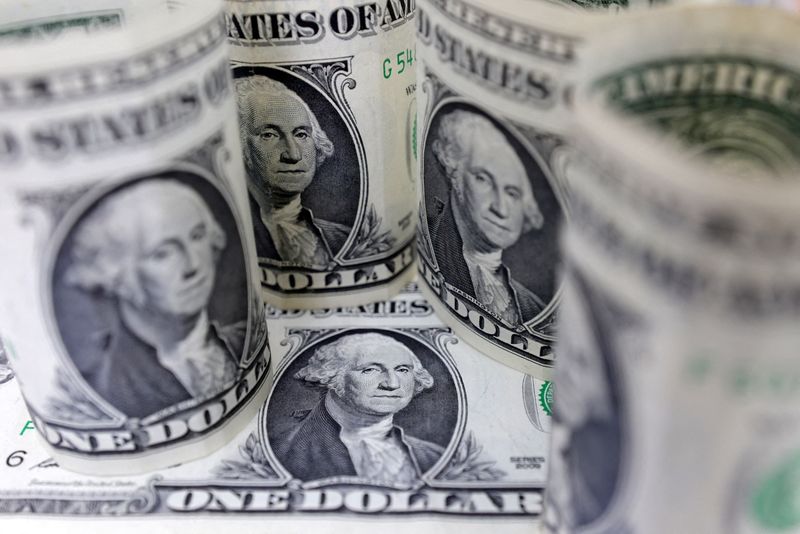Karen Brettell
NEW YORK (Reuters) – The dollar hit its highest level since early November against a basket of currencies on Monday and sent the yen to its lowest level since 1990 after U.S. retail sales rose more than expected in March.
Retail sales rose 0.7% last month, and February data was revised upward to show sales growth of 0.9% instead of 0.6% as previously reported. Economists polled by Reuters had forecast retail sales, which largely consist of goods and do not take inflation into account, would rise 0.3% in March.
The dollar rose as still-persistent inflation and strong economic growth cause investors to abandon expectations about when the Federal Reserve is likely to start cutting rates. The US central bank also now expects smaller rate cuts than before.
“The US data continues to come in better and better than expected,” said Brad Bechtel, global head of FX at Jefferies in New York.
Traders now expect fewer than two 25 basis point cuts by year-end, after previously expecting three cuts.
New York Fed President John Williams said Monday the Fed’s policy is healthy and remains restrictive, adding that he believes interest rate cuts are likely to begin this year.
The Japanese yen in particular has been hit by the strength of the US dollar and the wide interest rate differential between the two countries.
Japanese monetary officials have stepped up warnings that they may intervene to support the currency. Finance Minister Shunichi Suzuki said on Monday he was closely monitoring the currency’s movements, reiterating that Tokyo was “fully prepared” to act.
Bechtel believes any potential intervention is more likely if the yen weakens rather than during episodes of broad dollar strength.
“I think we still need a big day where the yen actually underperforms the market by 1% or more,” he said, adding that Japanese officials could also intervene at a key level such as 155.
The dollar was last up 0.59% against the Japanese currency at 154.19, after hitting 154.45.
It hit 106.23, its highest since Nov. 2, and was last up 0.24% at 106.20.
Investors are also focused on escalating tensions in the Middle East, which is seen as increasing demand for the safe haven US dollar.
Israel faced growing pressure Monday from allies to show restraint and avoid escalating conflict in the Middle East as it considers how to respond to an Iranian missile and drone attack over the weekend.
The euro fell to $1.0622, its weakest since Nov. 3, and was last down 0.18% at $1.0623.
Last week, the single currency recorded its biggest weekly percentage fall since late September 2022 as the European Central Bank left the door open for a rate cut in June.

The Australian dollar also fell to $0.6441, its lowest level since November 14.
Cryptocurrencies fell 6.24% to $62,950.00. It hit $61,323 on Saturday, its lowest level since March 20.


